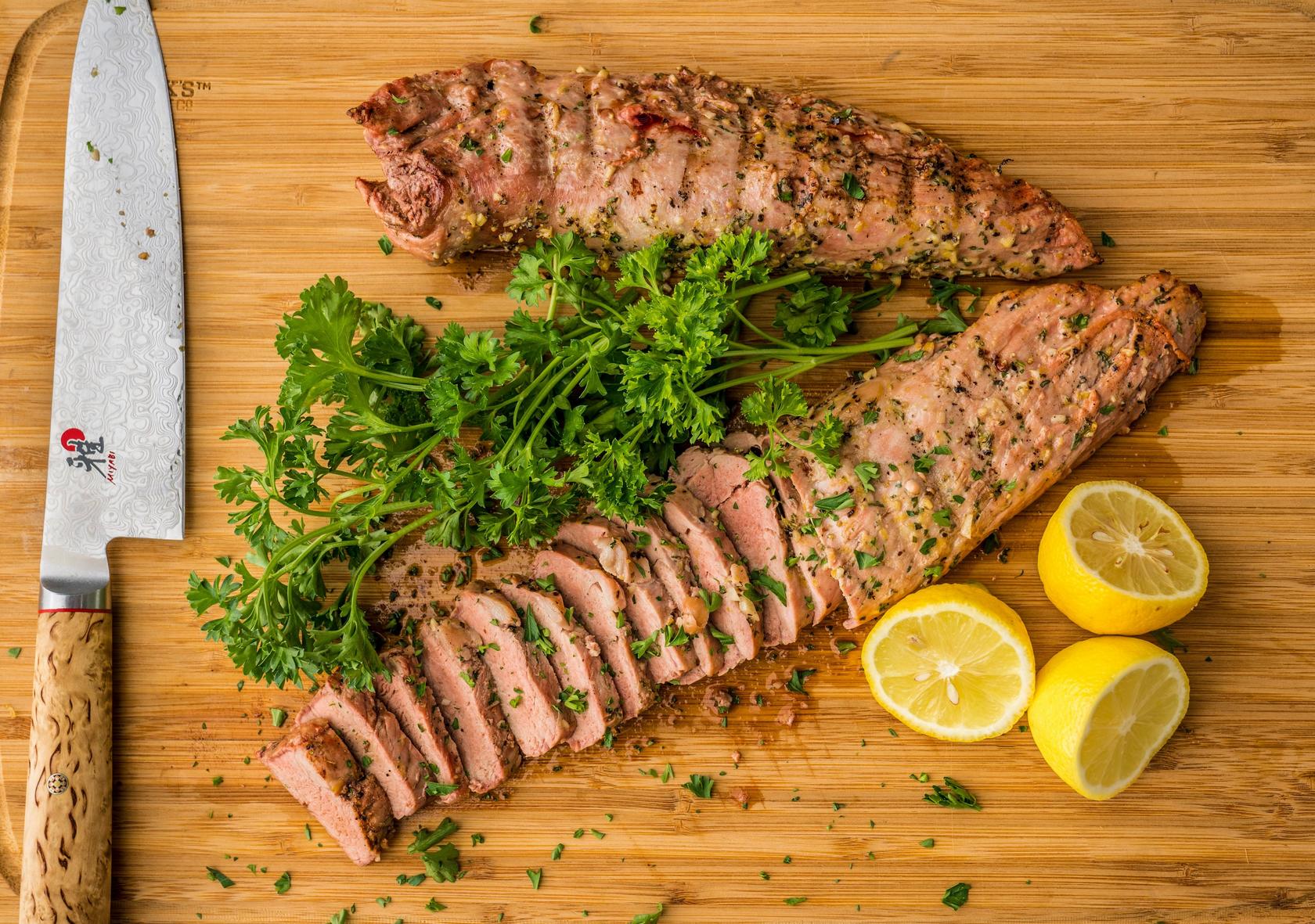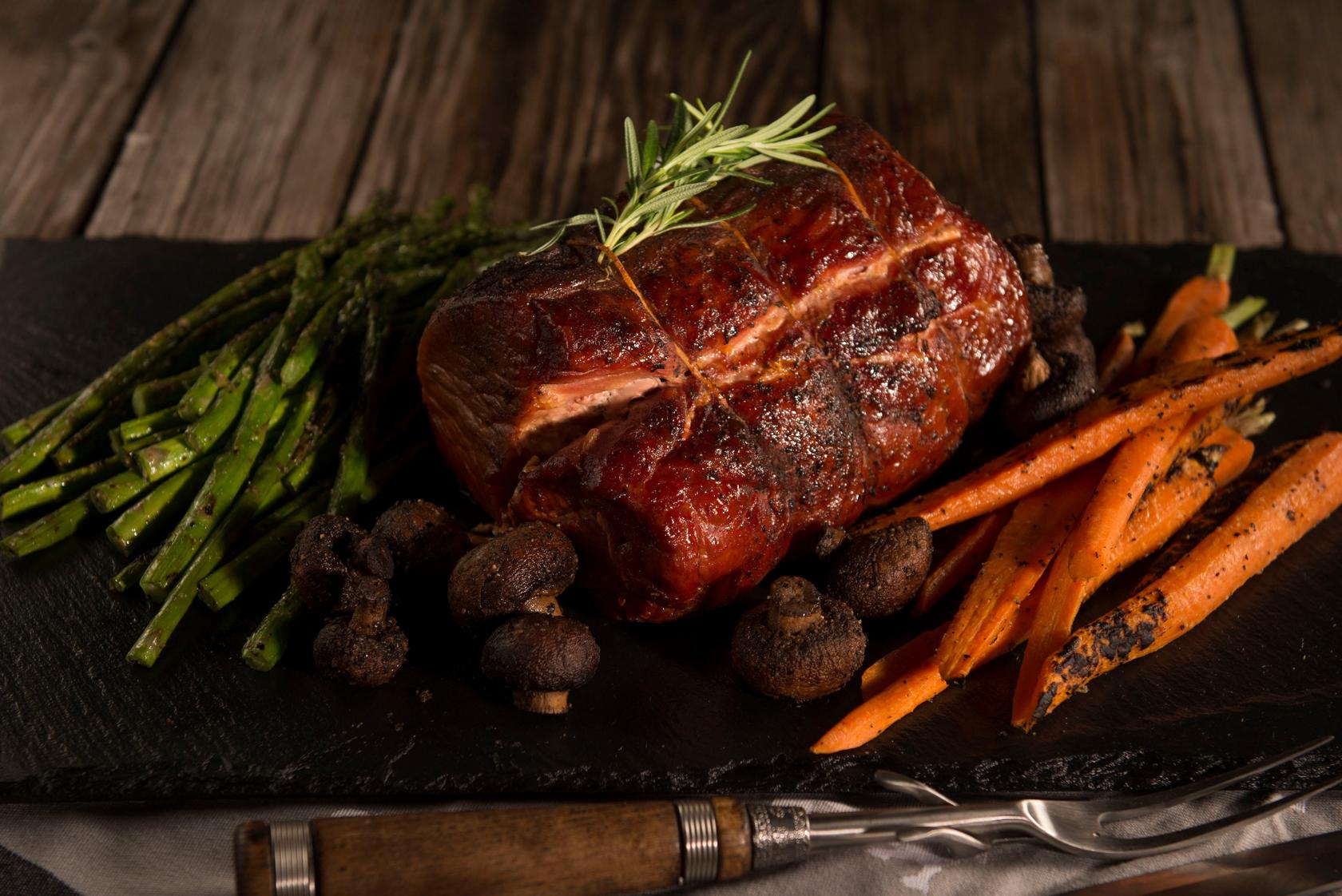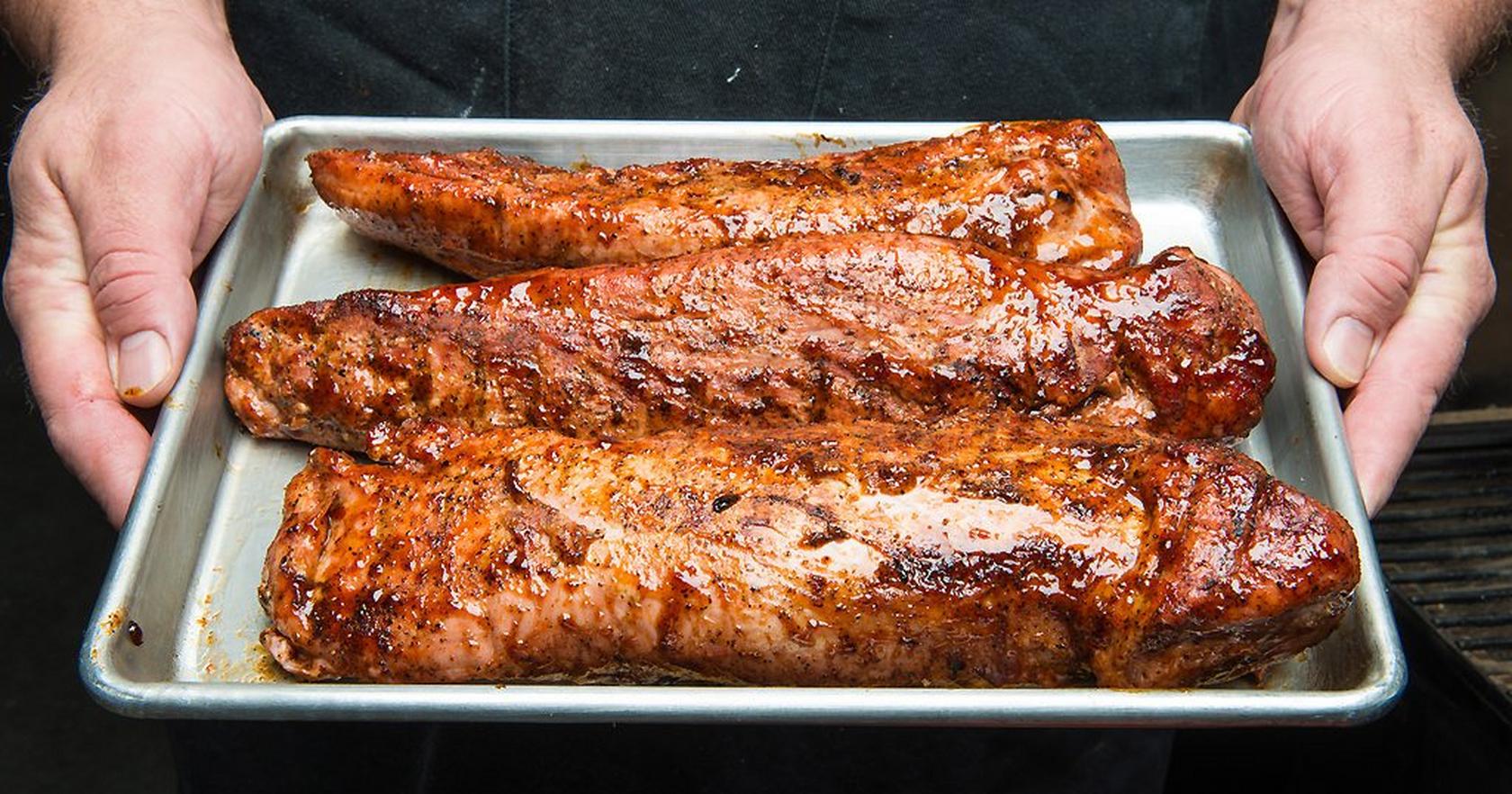
A pork loin and a pork tenderloin have a lot in common—they are both mild in flavor, take well to all kinds of flavorings, and may be cooked using a variety of cooking methods—but they are not, as some believe, the same cut. Let’s take a look at pork loin vs pork tenderloin.
The pork loin is a large cut of meat that runs along either side of the pig’s backbone. It gets broken down into many of the chops and roasts that make it to your supermarket. The specific pork loin cut that many confuse with pork tenderloin is actually a top loin roast, which is also often labeled a center-cut roast. This roast comes from the center of the loin, which is the meatiest part. It is available bone-in and boneless, which is more common. A pork loin roast will be about 5 inches across and generally weighs 3 to 4 pounds.
The tenderloin is a much smaller and skinnier cut of pork, usually only a couple inches across and weighing in between ¾ to 1 ½ pounds. Because this muscle resides underneath the backbone, it’s well protected and so gets no real workout, which is what toughens meat. So, as its name connotes, it is prized for its tenderness. It is to pork what beef tenderloin (fillet mignon) is to beef.
Pro tip: Bone-in pork chops that have a T-bone (aka a loin chop) include mostly loin on one side plus a bit of the tenderloin on the other.
Pork Loin vs Pork Tenderloin: Cooking Methods
While both cuts have a mild pork flavor that goes well with our Perfect Pork and Pork & Poultry Rubs, and both cook to the same internal temperature (about 145°F), the cooking process is not identical.
How To Cook Pork Loin
Avoid high heat with pork loin to keep it juicy.
One downside of pork loin is that it dries out easily. For this reason, it’s a great idea to brine pork loin before cooking it; a soak in the salty liquid adds flavor and keeps the meat juicy and moist. The orange infused brine in the dinner-party-worthy Citrus Brined Pork Roast with Fig Mostarda would work well as a first step in just about any pork loin recipe.
Roasting, as is done in this Honey-Glazed Roasted Pork Loin is another good possibility, but not at a high heat, which can overcook the loin. A steady 350°F is a better choice.
Of course, we may be partial, but perhaps the best way to cook a pork loin is to smoke it low and slow. That way you get loads of flavor and tender, juicy meat (just make sure to not open your lid throughout the cook or you won't have the best results).
For an easy introduction to smoking pork loin, try this two-ingredient Smoked Pork Loin recipe. Here's our guide on how to smoke pork loin.
Another good choice for pork loin is a braise, that is cooking the meat in a flavorful mixture low and slow to keep it tender. In this Smoked Pork Loin with Sauerkraut and Apples, the loin gets a brief smoke and then a long simmer on the Traeger with the tangy sauerkraut, beer, and apples, which not only keep the meat moist, but creates a rich, sweet and sour sauce as well.
For more pork loin recipes, including recipes for pork loin chops, click on the link.

How To Cook Pork Tenderloin
Quick cooking pork tenderloin can take the heat.
A quick scan of our favorite pork tenderloin recipes shows that we most often grill pork tenderloin. That makes sense because unlike a pork loin, a pork tenderloin it can take the heat and develops a lovely crust on the exterior, as you can see on this Cocoa Crusted Pork Tenderloin.
Because it’s so tender, brining a pork tenderloin is not essential for tenderness, but it can add flavor. A better bet for adding flavor to pork tenderloin is with a marinade; just don’t marinate it for too long in an acidic marinade or the tender meat can become mushy.
Pork tenderloin can also be roasted, though to be honest it makes a less impressive looking roast than a pork loin because of its small size. That said, it works really well roasted on the Traeger on a baking sheet as in this easy weeknight recipe for Pork, Apple, and Sweet Potato Sheet Pan Supper.
Of course, because we’re Traeger, we also think pork tenderloin is amazing smoked as in our very popular Smoked Pork Tenderloin. Because it’s so much thinner than pork loin, it takes about half the time to smoke it. You can also mix the methods to get the best of both worlds, start on low heat to get that wood-fired flavor then crank it up to give it a great finish as in this Apricot Pork Tenderloin.
Because it’s so tender, pork tenderloins are also often cut into medallions and seared or grilled, which takes mere minutes. And in this unusual but delicious recipe, strips of the meat are twirled and skewered for fun to eat pork tenderloin “pops.”

Can Loin and Pork Tenderloin Substitute For Each Other?
As mentioned, because their flavors are so similar, most rubs, sauces, herb coatings, and other seasonings would work well with both cuts. If you’re following a recipe for pork tenderloin and have loin, consider lowering the cooking temperature and extending the time. Similarly, if swapping in pork tenderloin for loin, know that the tenderloin will cook much faster, so being checking for doneness early.
Is there a side to take on the pork loin vs pork tenderloin matchup? We don’t think so. That's because both cuts can be delicious, especially when cooked on a Traeger.
Smoked Pork Tenderloin
by Traeger Kitchen
277 Reviews
Prep Time
5 Min
Cook Time
1 Hr
30 Min
Serves
4
Pellets
Apple
Give your pork a sweet and smoky kick. This smoked pork tenderloin is marinated in a sweet honey and thyme mixture, and then smoked to perfection over aromatic applewood pellets.
Ingredients
main
| 1/2 Cup | apple juice |
| 3 Tablespoon | honey, warmed |
| 3 Tablespoon | Traeger Pork & Poultry Rub |
| 1/4 Cup | brown sugar |
| 2 Tablespoon | fresh thyme leaves |
| 1/2 Tablespoon | black pepper |
| 2 | (1-1/2 lb) pork tenderloins, silverskin removed |
1
In a large bowl, whisk together the apple juice, honey, Traeger Pork & Poultry Rub, brown sugar, thyme, and black pepper.
2
Add the tenderloins to the bowl with the marinade. Turn the pork to coat. Cover the bowl with plastic wrap and transfer to the refrigerator and marinate for 2-3 hours.
3
When ready to cook, set the Traeger temperature to 225℉ and preheat with the lid closed for 15 minutes. For optimal flavor, use Super Smoke, if available.
4
Insert the meat thermometer into the center of a tenderloin. Place the tenderloins directly on the grill grates, close the lid, and smoke until the internal temperature reaches 145℉, 1 to 2 hours. (The time will vary depending on the size of the tenderloins, your grill, and the weather.)
5
Remove the tenderloins from the grill and let rest for 5 minutes before serving. Enjoy!